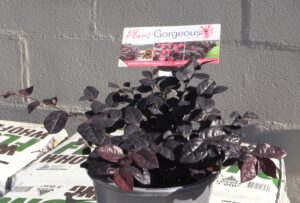Sick Rosemary
Plants like rosemary and lavender are Mediterranean natives. They are perfectly adapted to wet winters, hot dry summers and well-drained soils. It’s been a very wet year in many parts of Australia, particularly along the east coast, and gardeners are finding that their rosemarys and lavenders are dying. These plants cannot tolerate excessive rain, high humidity and poorly drained soils. Don looked at a hedge of rosemary (Rosmarinus officinalis) that was in very bad shape. Some of the plants had already died and been removed, others were suffering various fungal problems and would soon be dead. A soil test revealed that the plants were growing in a heavy clay loam, and the drainage was inadequate.
What to do if you have the same problem
Remove the dead and dying plants. When the weather warms up they can be replaced, but in the meantime work on the drainage. Raising the garden beds and using a sandy free-draining mix should solve many of the problems. Mediterranean plants also love lime, so it’s a good idea to sprinkle some horticultural lime around them once a year. (Don’t apply any lime if your soil is alkaline.)
Simple soil texture test
Just take a handful of soil and roll it into a long bolus or ‘snake’ (you might have to add a little water). If it falls apart you have a sandy soil. If you can form a short bolus you have a loam. If you can form a long bolus and can bend and shape it, you have clay.
Further reading
For detailed information about how to test soils and improve drainage refer to: Handreck, K., and Black, N.D., (1993), Growing Media for Ornamental Plants and Turf. University of N.S.W. Press. ISBN 0-86840-333-4



